Easter Island is famous for its mysterious stone statues, the Moai. These stone giants have fascinated visitors and researchers past and present. More than mere sculptures, they bear witness to an ancient and complex civilization, of which the ceremonial center, the Ahu, is a key element. Discover the Easter Island statues and plunge into the heart of Rapanui civilization.
Easter Island Statues
Polynesian Originality
From Hawaii to New Zealand, by way of Raiatea in present-day French Polynesia, all the peoples of the Polynesian Triangle had founded community and ceremonial spaces, places representative of religious and military power and, more generally, of clan politics. Each space followed an original development to better reflect local particularities. On Easter Island, these complexes are called Ahu.
In the second half of the first millennium AD, newcomers to Easter Island from Polynesia imitated the marae model they were familiar with: a rectangular platform paved with coral rock and generally unbuilt. Wooden statues and vertical stone slabs completed the edifice. As the centuries passed, the population began to erect statues several meters high on ceremonial platforms: the Moai.
The Moai are the emblematic Easter Island statues. They represent the ancestors, protectors of the clan and family and guarantors of the island’s mana. Thanks to their benevolence, harvests would be good and fishing fruitful. At its peak, the island boasted some 1,000 Moai. Given Easter Island’s small surface area and sparse population, this is an extraordinary feat.
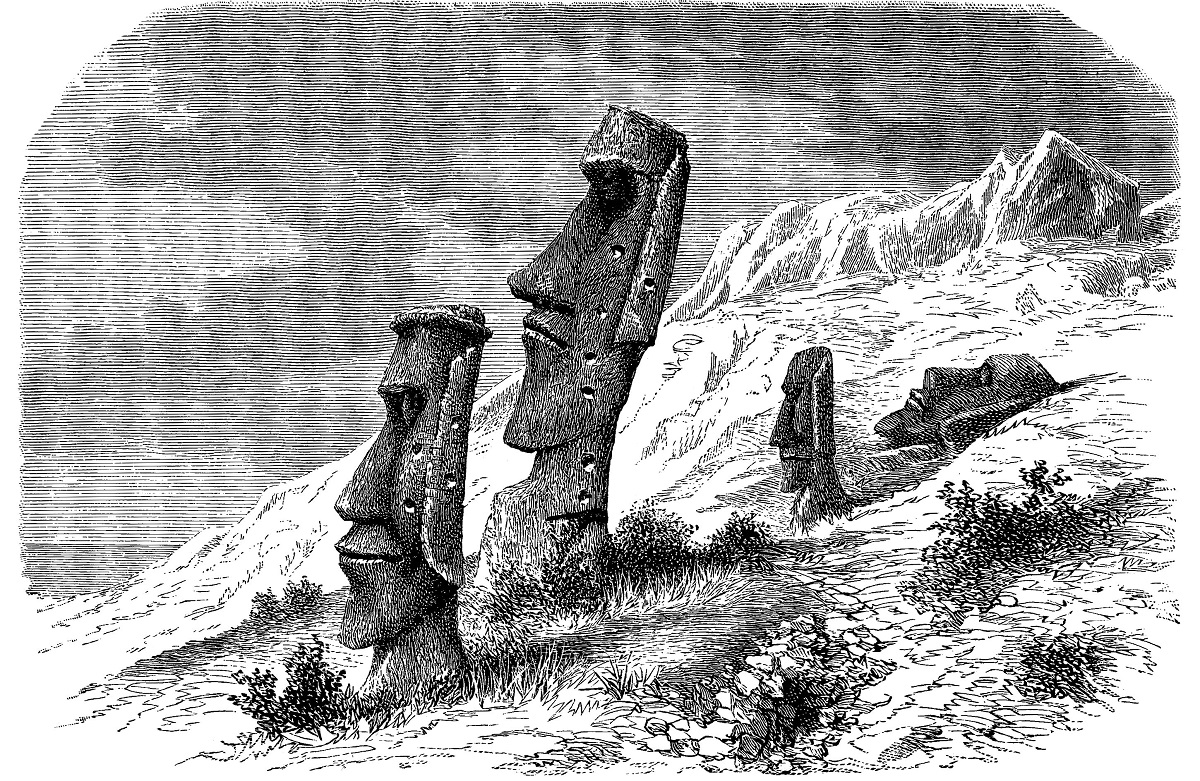
Apocalypse and Resurrection
Although there are no written sources attesting to it, it seems that the destruction of the Moai was the work of the Rapanui populations themselves. Soil impoverishment and the scarcity of raw materials led to fratricidal wars, resulting in the overthrow of the Moai of the enemy clan. The crisis was moral and spiritual: mistrust of the ancestors who had failed to guarantee the prosperity of their progeny. It was at this point that the cult of the Birdman appeared.
The encounter with the Western world precipitated the downfall: raids on the population by American slavers; introduction of deadly diseases; keeping of the survivors in a reserve while the rest of the island became a vast pasture for Western breeders. The Easter Island statues fell into oblivion and oral transmission was interrupted.
A revival began in the 1960s, when anthropologists set about rediscovering Easter Island’s buried heritage. Until then, the natives had been forbidden to visit the island, and only in 1966 did Chile grant them full citizenship rights. One man in particular stands out: the American William Mulloy. He rebuilt the Moai and restored the Ahu, leading to an extraordinary revival of Rapanui culture. The statues of Easter Island were back!
Visit the Easter Island Statues
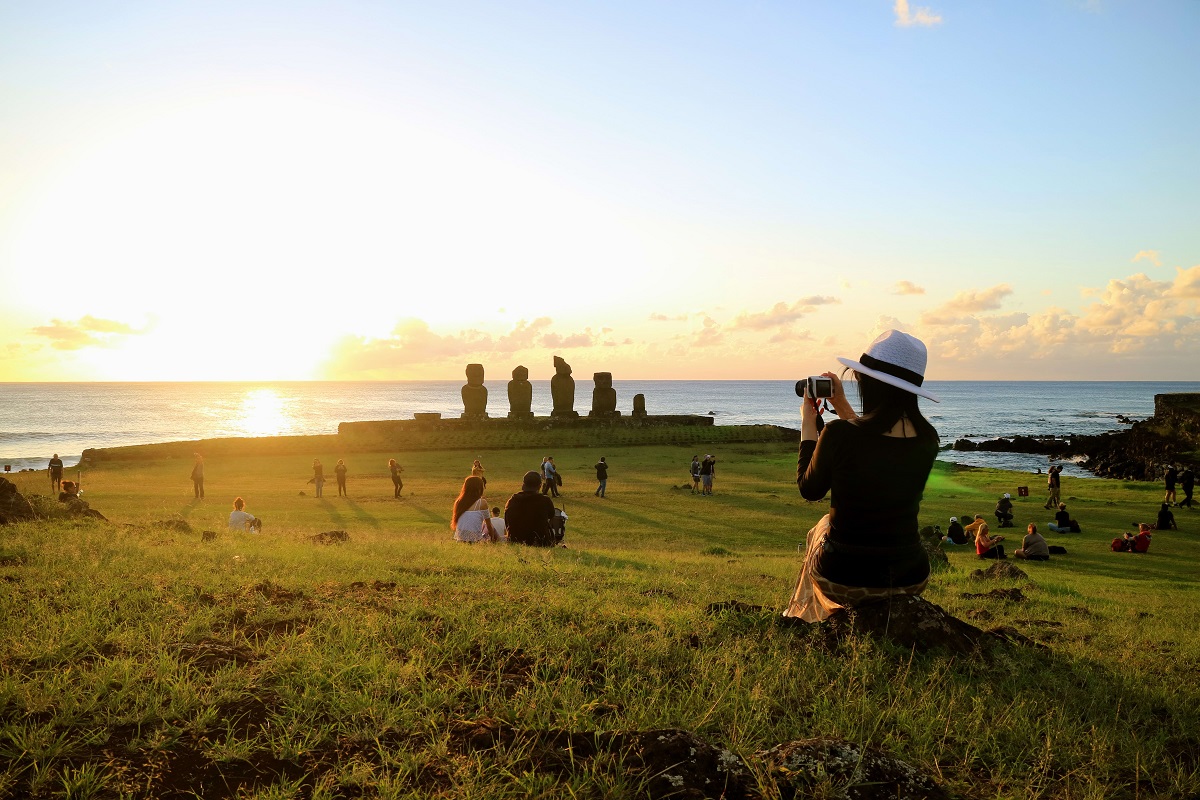
Rapa Nui National Park
Most of the archaeological sites are located in Rapa Nui National Park, which covers over 40% of the island’s surface area and has been a UNESCO World Heritage Site since 1995. The park is open daily from 9am to 6pm. An entrance fee of around 80 USD per adult and 40 USD per child is required.
Tickets can be purchased online before your arrival. Valid for 10 days, they give unlimited access to the restored sites and a single access to the quarries. Checks in the park are frequent. Always have your entry ticket and passport to hand. Any damage to the site can result in fines, expulsion or even imprisonment.
Another important constraint is that access is only permitted to people accompanied by a guide recognized by the park administration, or by a local resident. It is therefore essential to book a guided visit or organized tour.
Open-Access Sites
Other, smaller sites are freely accessible. They are located in the north, near Anakena beach, or on the west side of the island, near the main village of Hanga Roa. Some of them feature a single Moai.
For the most part, these areas are located on private land, but access to them remains unrestricted. Here again, heritage protection rules apply. So stay on the marked paths, don’t climb onto the ceremonial platforms and, above all, don’t touch the Moai.
Places to See the Easter Island statues
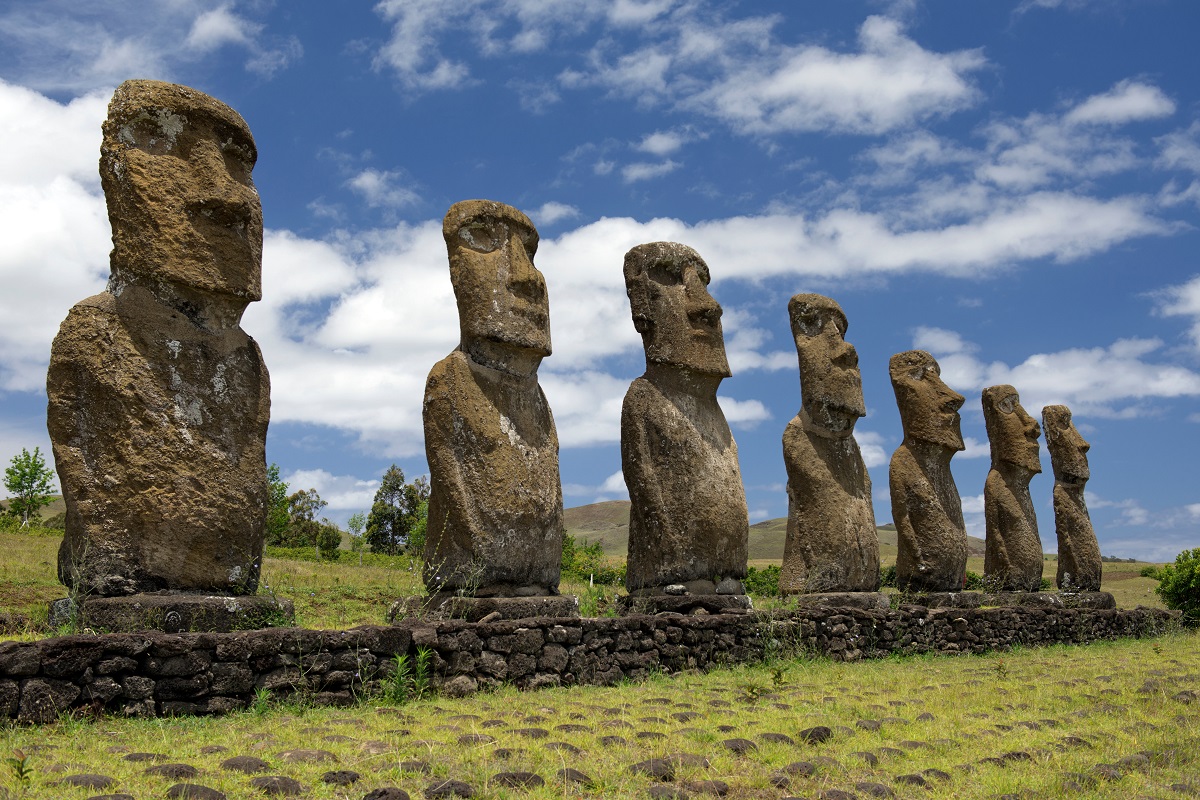
1. Ahu Akivi: A New Identity
Ahu Akivi is a jewel of restoration and aesthetics. The complex comprises an imposing platform on which stand seven majestic Moai, over four metres high. Positioned on the side of the volcano, the statues face the ocean. The entire structure was designed to follow an astronomical orientation, defining the seasons of the year.
The building was the first of its kind to be restored on Easter Island. The success of the project and the enthusiasm it generated have set in motion the famous revival of Rapanui cultural identity, with the rehabilitation of ever larger and more monumental sites.
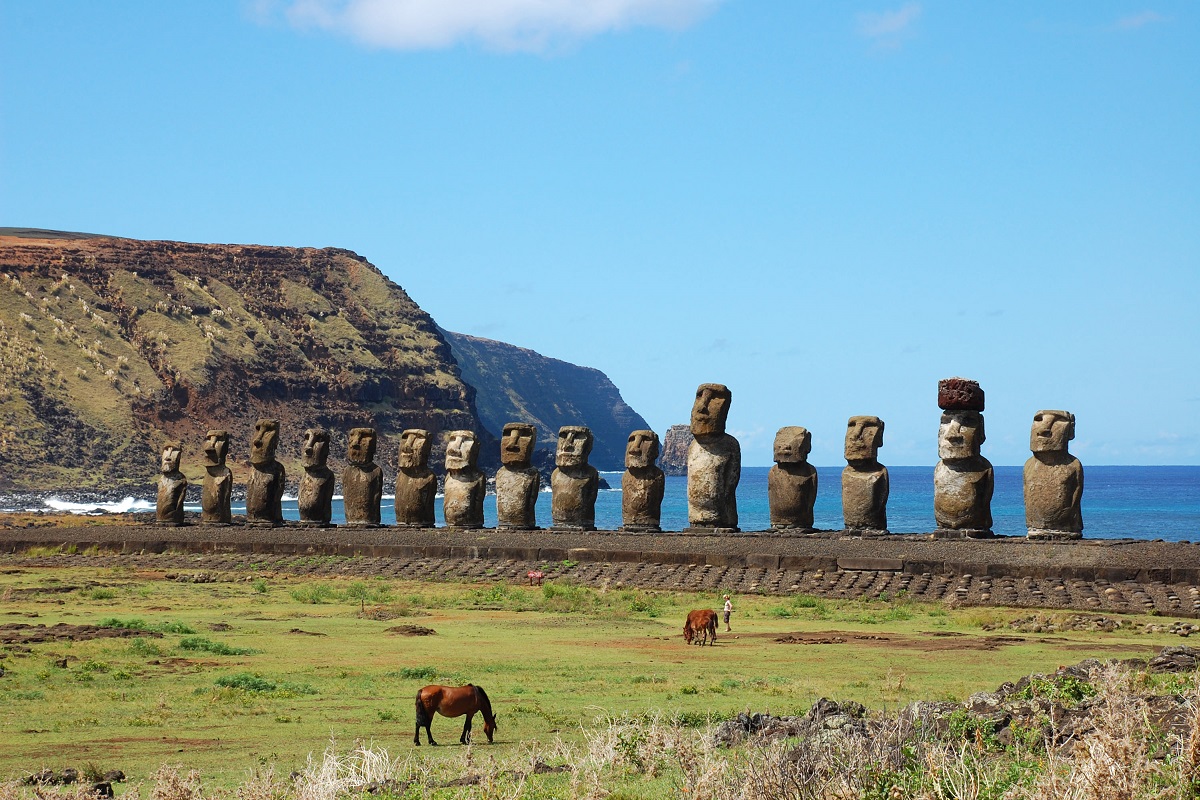
2. Ahu Tongariki: The Most Monumental
Ahu Tongariki is the most imposing ceremonial platform on Easter Island. With their backs to the ocean, 15 colossi tower over the land in an inordinately large complex: almost 200 m long! It’s a powerful, solemn moment.
In addition to its gigantic size, the site’s particularity lies in its east-facing location. Come at dawn to witness one of the most exceptional sunrises the world has ever seen. It’s also one of the best things to do on Easter Island. Chills guaranteed!
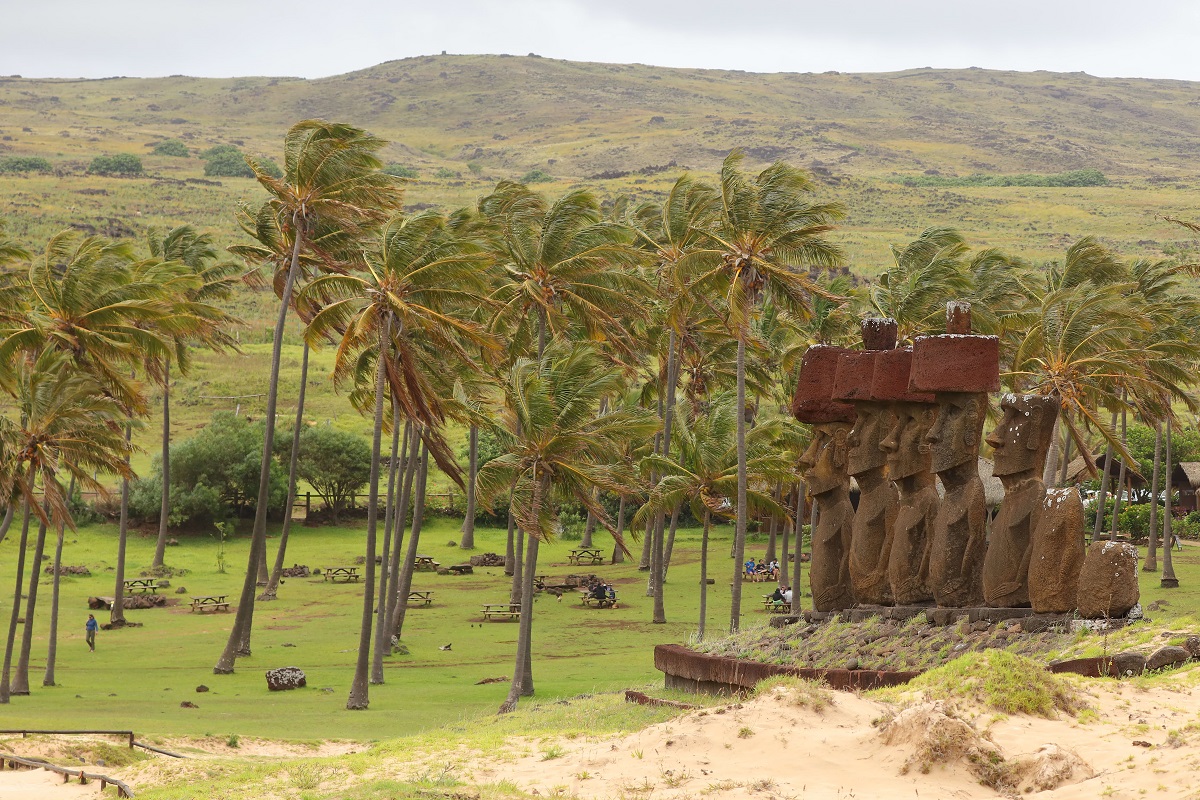
3. Ahu Nau Nau: The Finest
Of the seven colossi on Ahu Nau Nau, five are in perfect condition. Buried in the sand, they have been protected from erosion and time. Their restoration now allows us to appreciate the finesse of their facial features. Above all, four of the statues are clad in pukao, a kind of headdress sculpted from red volcanic rock.
The Moai encounter takes place in a charming setting typical of the Pacific islands. Indeed, Anakena beach is right on the doorstep, with its dreamy landscape of white sand and crystal-clear waters.
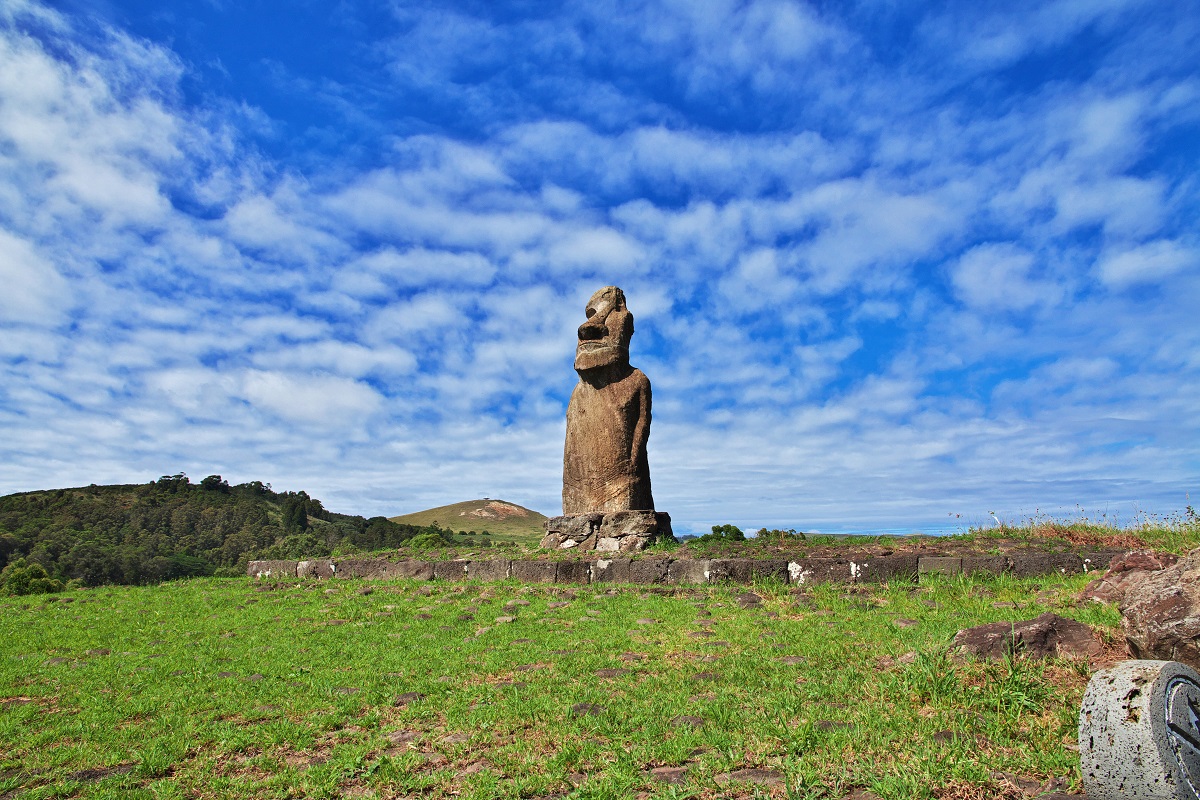
4. Ahu Huri A Urenga: The Four-Handed Moai
At the heart of the island stands a Moai, enthroned alone on a huge stone platform. While it passively scans the interior, in ancient times it was the equal of an astronomical observatory. Surprisingly, this solitary 5-metre-high colossus has two pairs of hands.
The Ahu Huri A Urenga is not part of Rapa Nui National Park. Although it is located on private land, it remains open to all lovers of unusual and mysterious spaces. Very close to the village, a visit is just a few minutes’ walk away.
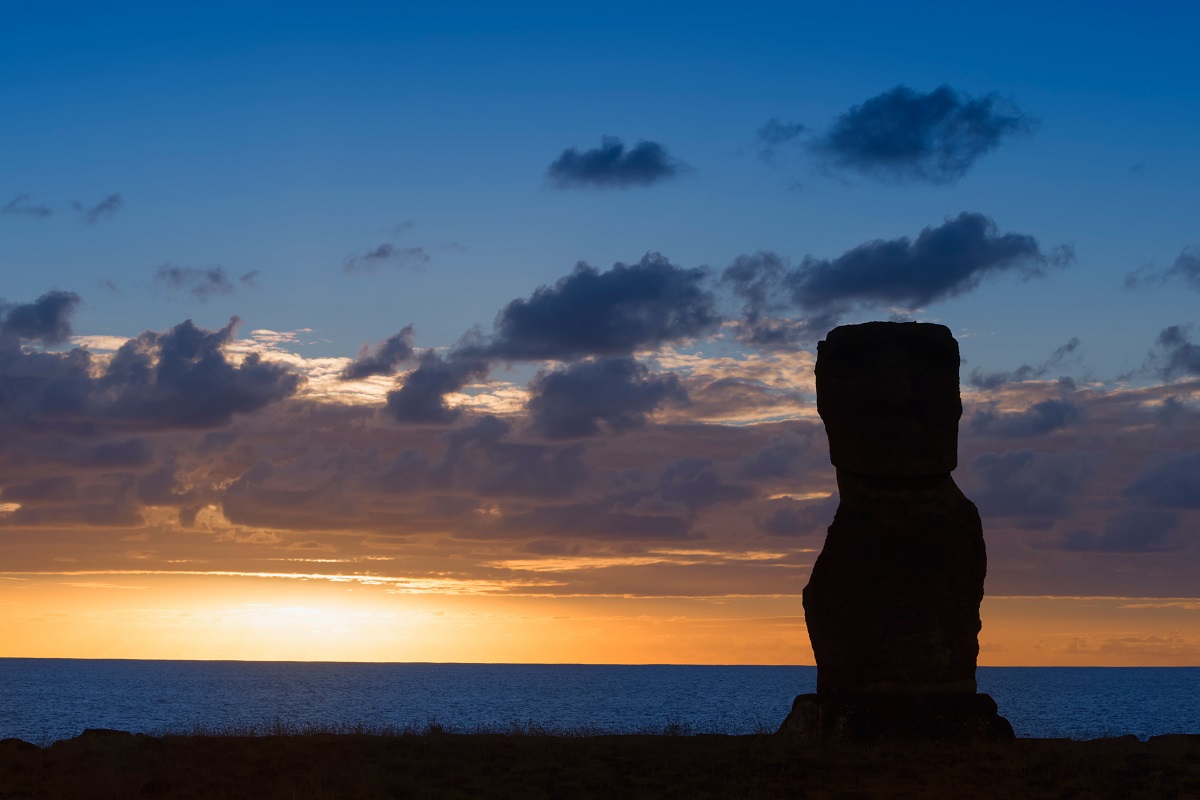
5. Ahu Hanga Kio’e: At Sunset
Easily accessible from Hanga Roa, a solitary Moai turns its back to the ocean and the setting sun. Yet this 4-metre-high giant stands at one of the most sought-after vantage points on the island. It too is not part of Rapa Nui National Park, making it an ideal destination for a short walk after dinner.
Whether you get there on foot or by bike, you don’t want to miss a sunset that, while wonderful, will remind you of the isolation and solitude of Easter Island. A gentle melancholy in the evening air…
Discover the Easter Island Statues!
Don’t miss out on any of Rapa Nui’s mysteries, and take your turn discovering a surprising island. The Moai are certainly the main reason to visit Easter Island. But there are plenty of other sights and activities to keep your attention. Explore the Polynesian Triangle and contact us to plan your trip to the South Pacific.


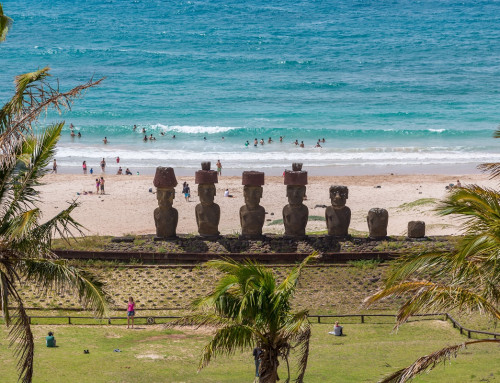
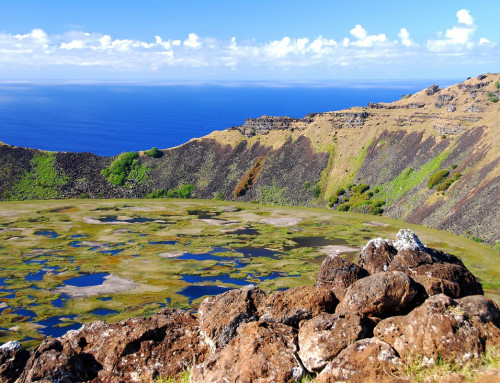

Leave A Comment